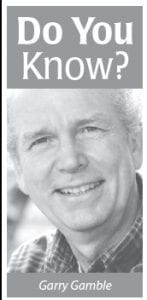While the public often hears commissioners and public figures reference Cook County’s Property Tax Rate as being one of the lowest in the state, property tax is only one of four perspectives to be considered when comparing Minnesota’s price of local government.
To better understand this, I’ll use an analogy (surprise! surprise!). The color purple, for example, is derived from a combination of different pigments. Leave out one of those pigments and you will not end up with the color purple. This principle holds true when it comes to determining the price of local government; a combination of perspectives must be considered or, as in the analogy, you will not end up with the “true” price of local government.
Before examining these perspectives, however, I would like you to consider two important abilities suggested by Peter Stearns, professor at George Mason University:
. The Ability to Assess Evidence. Learning how to combine different kinds of evidence — public statements, private records, numerical data — develops the ability to make coherent arguments based on a variety of data. Assessing various kinds of credible evidence helps “paint” the most accurate picture. Learning how to interpret the statements of political leaders — one kind of evidence — helps form the capacity to distinguish between the “objective” and the “self-serving” among statements made by commissioners and public figures.
. The Ability to Assess Conflicting Interpretations. Learning how to identify and evaluate conflicting interpretations is an essential citizenship skill for which history, as an often-contested laboratory of human experience, provides training. Experience in examining past situations provides a constructively critical sense that can be applied to partisan claims when it comes to spending your money. Studying history teaches the need for assessing arguments, and it provides opportunities to engage in debate and achieve perspective.
’Nuff said, let’s get started… .
Comparing Minnesota’s price of local government from the perspective of property tax
The property tax perspective considers the relationship between personal income and property taxes paid by individuals and business residents in the county.
As decades of tax policy debates in Minnesota have shown, perceptions about the price and affordability of local government hinge on levels of property taxation. Property tax prices are essentially viewed as synonymous with the price of local government in the eyes of most citizens, despite the fact that property taxes routinely pay far less than half of local government costs.
According to Cook County’s 2015 state audit, property tax revenues amounted to 29 percent of the budget or $6.68 million – an 11.3 percent increase over the previous year.
Comparing Minnesota’s 87 counties, the average county-level property tax burden relative to personal income was 2.92 percent in 2014 (most recent figures available on a statewide basis). Ranked highest (first) was Swift County at 5.2 percent. Cook County, at 2.4 percent, ranked 84th (four other counties were also at 2.4 percent) and Koochiching and Winona counties tied for lowest at 2.3 percent. By comparison, neighboring counties, St. Louis and Lake, were at 3.1 percent and 3.3 percent, respectively.
If we were to move Cook County from the 2.4 percent to St. Louis County’s 3.1 percent, residents and businesses would need to come up with an additional $1.3 million in property taxes. To match Lake County’s 3.3 percent, we would need to increase property taxes approximately $1.6 million.
So, from the perspective of property tax alone, yes, Cook County residents pay less in property tax than 80 other counties in the state of Minnesota.
However, as I stated earlier, property tax is only one of four perspectives to be considered when comparing Minnesota’s price of local government. Next week we will consider Perspective Two: Cash Income Price of Local Government After Exporting Taxes Paid by Non-County Residents. Let us never forget this fundamental truth: The state has no source of money other than money which people earn themselves. If the state wishes to spend more it can do so only by borrowing your savings or by taxing you more. It is no good thinking that someone else will pay – that ‘someone else’ is YOU.
Margaret Thatcher
Former Cook County Commissioner Garry Gamble writes this column about the various ways government works. This begins a five-part series on Comparing Minnesota’s Price of Local Government.



Loading Comments